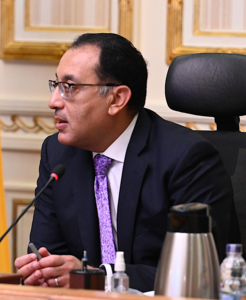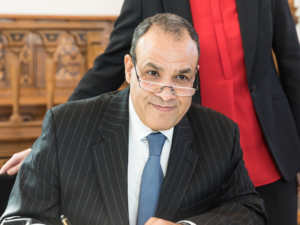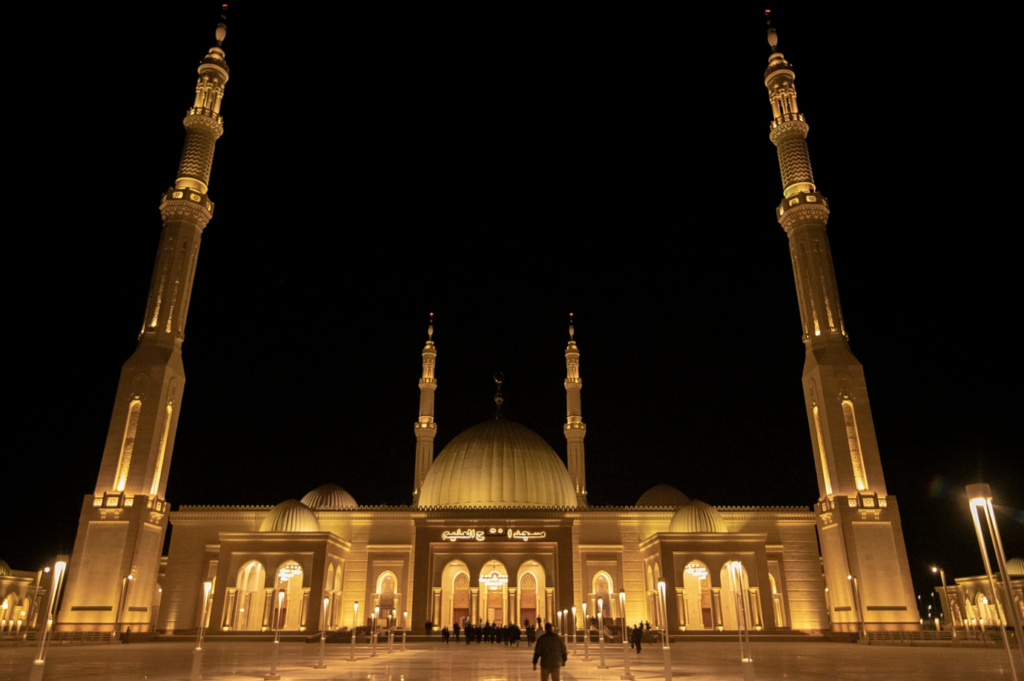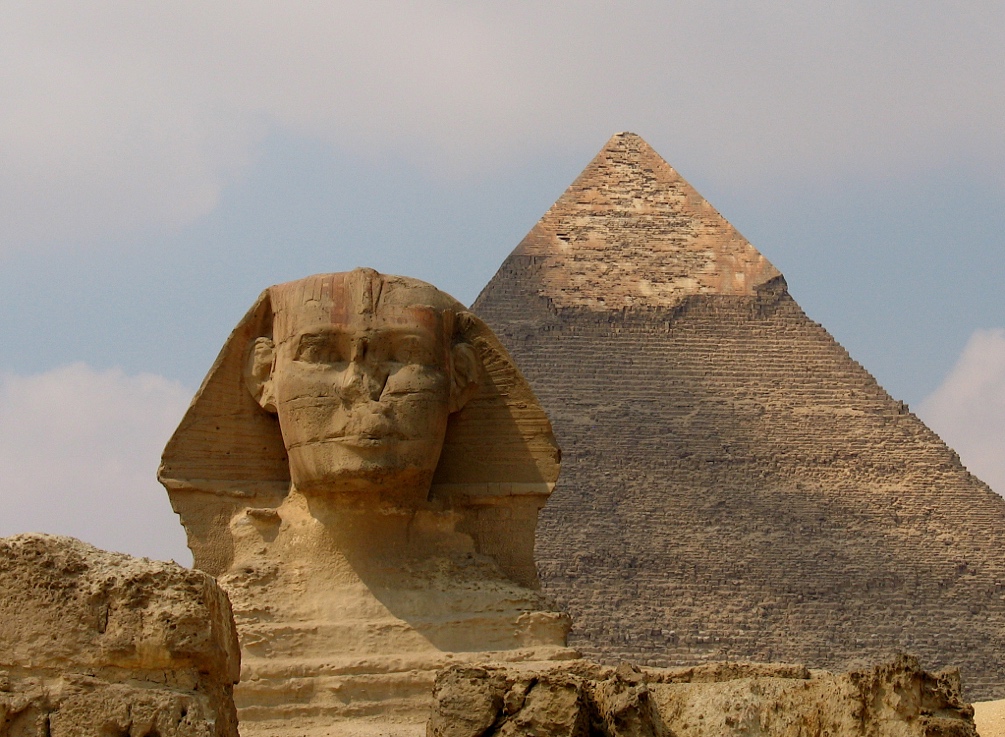Central Business District (CBD) in the New Administrative Capital of Egypt © Mahan84848
Egypt, the land of the pharaohs and the millennia-old monuments has captivated all humankind with its stories shrouded in mystery. Even today, there are countless theories about how the pyramids were built, and a multitude of books and films have captured people’s imagination with stories about the ancient Egyptian world to this day.
But Egypt is so much more than that. Located in the north-eastern corner of Africa, it was home to one of the most important civilisations of antiquity and one of the world’s earliest urban and literate societies. Alternately conquered or occupied by Greeks, Romans, Arabs, French and British, it borrowed from all these civilisations and eventually became one of the intellectual and cultural centres of the Arab and Islamic worlds and the complex society it is today. According to official figures, Egypt was ranked 8th in the Quality of Life Index for the Arab world in 2021. With over 109 million inhabitants, a growing GDP and a strategic geographical location, Egypt is now a non-negligible player on the international stage.
Over the millennia of its existence, Egypt has located its capital in various places, from the oldest capital, Memphis, to Thebes, Tell el Amarna, Alexandria and Cairo, all of which have played a significant role in Egyptian history.
Cairo, today’s capital, is one of the largest urban agglomerations in the world, home to around 20 million people. It is also one of the fastest-growing cities in the world and is expected to double its population by 2050.

Cairo experienced an era of great development after Muhammad Ali Pasha, the founder of modern Egypt, came to power in 1805. His visit to the Paris World’s Fair in 1867 was one of the most important milestones for the city. After his return, a new urban plan was drawn up for the city.
The opening of the Suez Canal two years later also contributed to the further development of Cairo. The old part of the city was complemented by a new, western side, characterised by large squares and bridges, green gardens and stately buildings. The ‘Paris of the East’, as it was soon called, housed the largest national library in the region and also a smaller version of Milan’s opera house, La Scala.
But as in the 1800s, it’s time for change again. Cairo is crowded and traffic is often hectic and congested. A lot needs to be invested, but even so, the city has its limits.
The economic conference in Sharm el-Sheikh (March 2015) was the turning point and the starting signal for a 15-year development plan, the ‘Egypt Vision 2030’.
The expansion of Cairo’s infrastructure was decided, but the idea of a new capital city also came up, announced by Egypt’s then-Housing Minister, Mostafa Madbouly (now Prime Minister). Before embarking on this huge project, experience was gained from previous capital relocations. Egyptian officials met with representatives of Astana, the new capital of Kazakhstan, which replaced Almaty in 1997.

Although Chinese and Emirati investment consortia are involved in the project, the Egyptian government is financing and managing most of the construction through the Administrative Capital Urban Development Company (ACUD), an Egyptian joint stock company whose main shareholders are the Ministries of Defence and Housing.
ACUD manages the planning and construction of the infrastructure, but also most of the sales of land and housing units in the new capital.
The state-owned construction company Arab Contractors is responsible for building the water supply and sewerage systems in the new capital. The army has already built the roads to the new capital before the official announcement of the project.
Construction of the new capital began rapidly in 2018, and the entire project was expected to be completed in several stages. The Covid 19 pandemic slowed down the pace a bit, but the project is gradually being completed.
H.E. Dr. Badr Abdelatty, Egypt’s Ambassador to Belgium and Luxembourg, described to me, during a very pleasant and detailed conversation, the many planning and execution phases of the new capital, which he said is already 80-90 per cent complete.
He added, “Only about 4 per cent of Egypt’s land is currently inhabited, so there is a real need to expand the populated areas. The entire development master plan aims to build 14 new smart cities from scratch, one of which is the ‘new capital”.

The new capital is a massive development project. The city will be the new administrative and financial capital of Egypt. It has a unique geographical and strategic location, being only 45 km east of Cairo (just outside Cairo’s second major ring road) and thus closer to the Suez Canal and the port of Ain Sokhna.
The new capital is considered one of the most ambitious projects in the region. The plan is to create a modern, sustainable and high-tech metropolis with a focus on green spaces, smart infrastructure and efficient transport. It will be divided into 21 residential districts.
The name of the city has not yet been decided, but a competition has been launched to find the best name and logo for the city. A jury of experts has yet to evaluate the proposals, but so far all we know is that the city could be called ‘Egypt’.
The total area of the new capital is about 714 square kilometres and it is estimated that the total population will reach 6.5 million people when the project is completed.
“We hope that the cost of living in the new capital will be lower, that it will offer modern housing, public transport and a much better quality of life for its new citizens. It is also estimated that 2 million new jobs will be created in the process.” (Dr Badr Abdelatty)

The new capital will be a smart, digital city prepared for the future. More than 6,000 surveillance cameras will monitor the streets, it will have an advanced system for sanitation (as water is scarce on the African continent), and it is said that residents will be able to file complaints directly through a mobile app.
The city will be equipped with advanced technologies, including a high-speed rail system, smart interconnected roads and a centralised traffic management system. The Cairo Light Rail Transit will connect the new administrative capital to Cairo. A monorail line is also currently under construction. It will provide a fast connection between the new capital, Cairo and Giza. For transport within and to the new capital, not only the monorail but also inner-city trams and an electric bus network will be used.
In January 2021, Egypt signed a contract with the German company Siemens to build a high-speed line running from the city of El Alamein (northern Mediterranean) to Ain Sokhna on the Red Sea, connecting the new capital with Alexandria, the other major city in Egypt. The 450 km long line is scheduled to be completed this year. The plans go even further, with an additional 1 750 km of high-speed rail linking the new capital to other cities such as Aswan in southern Egypt.

There is also a new international airport for the new capital, which will partially relieve the Cairo International Airport and the Sphinx International Airport.
When you look at the plans and pictures of the city, you understand the scale of the project. All administrative and political power will gradually be transferred here. By May 2023, 14 ministries and government offices have already been moved to the new administrative capital.
Moving the entire government from Cairo to the new capital is expected to cost over 100 million USD. 30 ministries, embassies and government offices, the Egyptian parliament and the presidency will move to the new capital. In the first phase, 50,000 government employees will be relocated and provided with new housing.
The Octagon (State Strategic Command Centre) is the headquarters of the Egyptian Ministry of Defence in the new capital. The building is the largest in the Middle East and one of the largest in the world, comparable only to the Pentagon in the United States of America (the similarity of the names is certainly no coincidence).
Forty-five African countries will move their embassies to the new city this year, and the embassies of the Gulf states will soon follow, but for most diplomatic missions, planning and talks for the move have already begun. Basically, it is only a matter of time before they will all move out of Cairo. The new capital will have a diplomatic quarter (as in other major capitals), an administrative quarter and a large United Nations headquarters.
“The Egyptian government has offered the EU a plot of land to build its new EU mission in the new capital. The city is to become a regional centre for business, innovation and culture. Both the largest cathedral and the largest mosque in Africa are to be built in the new capital, to set an example of tolerance between religions.” (Dr Badr Abderlatty)

Al-Fattah Al-Aleem Mosque, the grand mosque of the new city, located on a hill, covers a total area of more than 455,000 square metres and can accommodate up to 17,000 worshippers. It was inaugurated in 2019 by the Egyptian president, Abdel Fattah el-Sisi.
The mosque is the second largest in the world in terms of total area.
The Cathedral of the Nativity of Christ is the largest cathedral in the Middle East, covering 63,000 square metres, and will serve the Coptic Orthodox community in the city.
An innovation park, 18 new hospitals, artificial lakes, 90 square kilometres of solar parks, 40,000 hotel rooms, 1,250 mosques and churches, theatres and the largest opera house in Africa and the Middle East are just some of the facilities in the new capital.
It is also worth mentioning that several international universities have announced the opening of branches in the new city, which will attract even more people.
The new capital has been designed as a model for sustainable urban development in the region. In an effort to reduce pollution and make Egypt ‘greener’, the government has committed to providing 15 square metres of green space per inhabitant in the new capital. In addition to many parks and gardens, the city also has a ‘Green River’.
The plan is that all districts of the new capital will be connected to the Green River, which will imitate the course of the Nile River through the middle of Cairo. The water of this long canal will be completely recycled. On the banks of the river, picnic areas and outdoor sports activities, a mosque, a botanical garden, a Bedouin camp, restaurants, shops, an open library with reading gardens, a sculpture garden, a Ferris wheel and a large square are planned.
The infrastructure of the Green River is accessed by a network of pedestrian paths, cycle tracks and green bridges. All university campuses in the new capital are to be connected to the Green River in some way.
Central Park is the largest green space in Egypt (35 km long, larger than Central Park in New York).
The city also has an Olympic sports village, a 93,440-seat stadium and a large theme park four times the size of Disneyland.
“About 30 skyscrapers are currently under construction, including the Iconic Tower, which will be the tallest building in Africa”. (Dr Badr Abdelatty)
Oblisco Capitale, a skyscraper resembling a pharaonic obelisk is also in the planning stage. It will be the tallest building in the world (surpassing the Burj Khalifa and the Jeddah Tower), following its scheduled inauguration in 2030.
The Museum of Egyptian Capitals, located in the City of Arts and Culture in the new capital, tells the story of several Egyptian capitals and their development throughout history. This unique museum mainly focuses on nine Egyptian capitals: from the oldest, Memphis, to Thebes, Tell el Amarna, Alexandria, Fustat or Cairo, to the latest capital under construction.
Each of them played a significant role in the country’s history, which is presented in the museum’s two main galleries, also highlighting Egypt’s main role in establishing successful administrative systems over the centuries.
The second section of the museum focuses on the meaning of life after death in ancient Egypt (mummies, coffins and canopic vessels). The outdoor area of the museum consists of green meadows planted with papyrus and lotus flowers, the symbols of the north and the south in ancient Egypt.
This is perhaps the way forward and an example for other overly polluted and overpopulated metropolises in the world. Perhaps it is cheaper and easier to build a new city from scratch, a city worthy of the 21st century, equipped with all that the best technology can currently offer and with opportunities for constant improvement, than to try to ‘fix’ the old cities.
Nevertheless, some fear that the price the Egyptian people will have to pay may be too high (after all, it is a project worth an estimated $40 billion, largely financed by the state).

However, the effort to build a new city from scratch is also a great economic opportunity. Although the project represents a significant financial burden, it offers the opportunity to create many much-needed jobs and boost Egypt’s core industries and private sector, such as construction, while generating high tax revenues.
There are voices arguing that the price of housing in the new capital will be too high for most Egyptians or that the effort of resettlement is underestimated. Only time will tell the pros and cons of this project.
Until then, Egypt is looking forward to this achievement, which, like other gigantic projects, will have to prove itself over time. However, Egypt’s new capital has come out of the woodwork in a relatively short time and promises a higher quality of life for many people.
“It is a complex vision” (Dr Badr Abdelatty)

